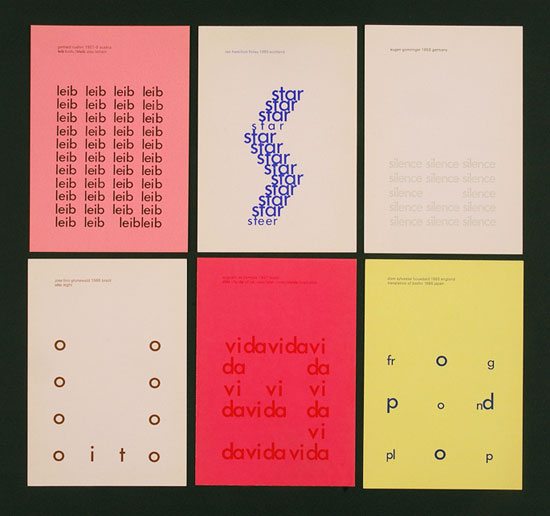I recently discovered a very fun, free and quite easy to use program called Wordle for creating word clouds. After typing in or uploading text Wordle creates a word cloud giving prominence to words that appear most in the entry. Each word is represented once in the finished product. The fun part is changing colors, font, and layout to individualize your creation. Users can upload there finished creations for others to view, print, or save to their own sites. The uses for both personal enjoyment and class lessons are limitless. I really like this classroom lesson using Wordle to dissect meaning in current event articles.
Wordle reminded me of a form of poetry I have loved since discovering the children's picture book A Poke In The I, concrete poetry. Concrete poetry, also known as pattern, shape, and visual poetry, places emphasis on the typographical structure of the written text to relate meaning even more so than the words contained in the poem. For example, a concrete poem relating the design and emotion of a sailboat will allow the words in the poem to outline and create the look of a boat. Anything and everything we see, feel, or imagine can be transformed into a shape constructed from words. The words we use to describe something become a picture in concrete poetry. For a formal definition visit Poets.org.
Concrete poetry has roots in Greek lettering and the works of authors such as Ezra Pounds, E. E. Cummings, and Lewis Carroll's description of a mouse's tale in Alice In Wonderland. The medium's modern popularization and structure comes from Europe and South America, especially Brazil where a manifesto was written to encapsulate the meaning and direction of the art form. Many of the ideas and resulting images have found their way into graphic design, advertising, and art over the years resulting in a broader understanding of concrete poetry by adherents. If concrete poetry interests you follow some of the links below and look for books online and in larger library collections.
Minimalist Concrete Poetry - A wonderful collection of images from various artists
Wikipedia entry - The article gives a brief but encompassing overview of concrete poetry
August de Campos - A leader in the Brazilian movement of the 1950s and 1960s
Concrete Poetry Creator - Site for making a concrete poem directed at children
Concrete Poems - A site with simple but fun examples
***The image above is from The Optimism of Modernity.
- Christopher Bishop


No comments:
Post a Comment